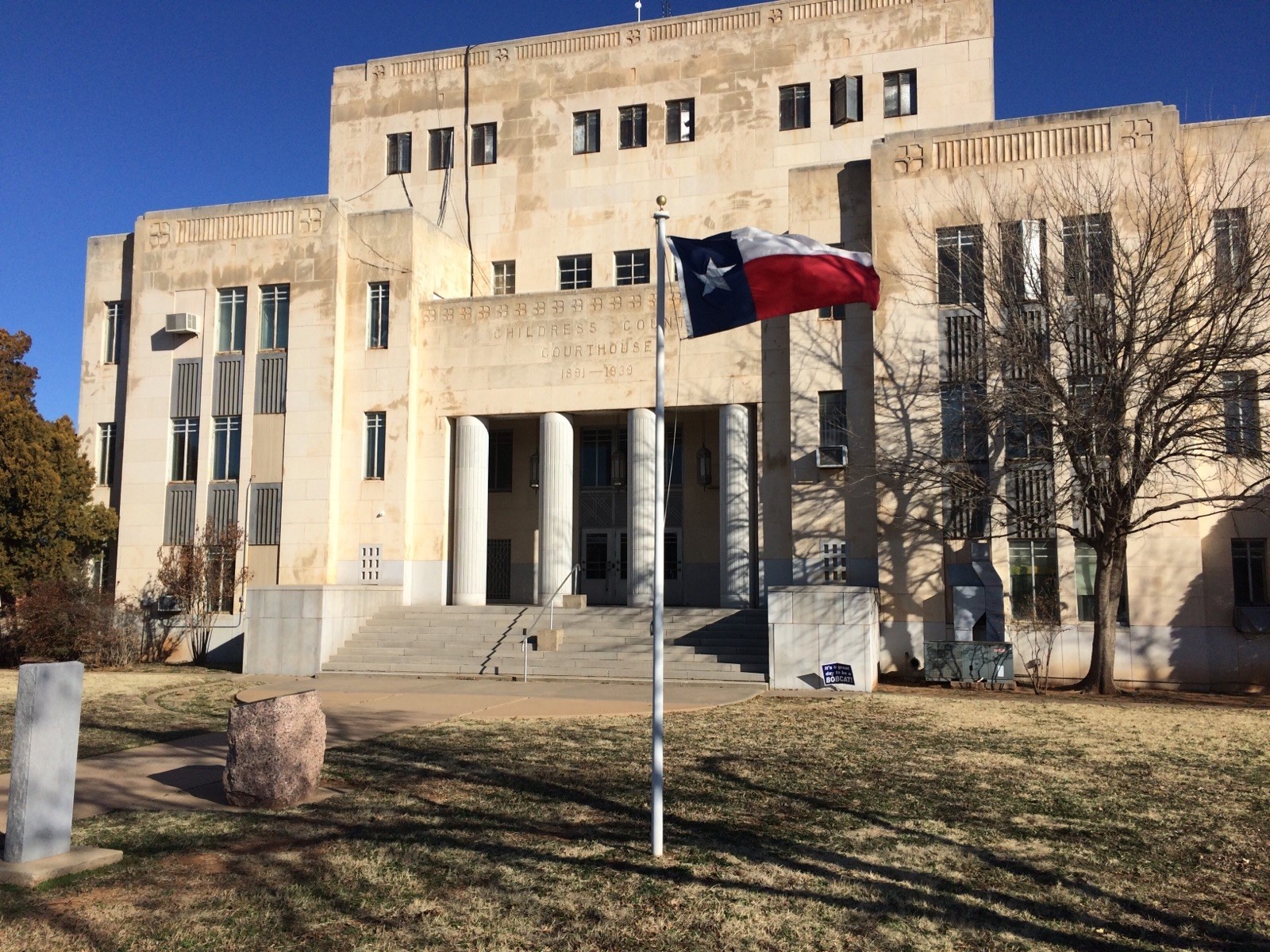County Seat: Childress | County Population: 6,664 (2020 Census)
The Childress County Courthouse boasts a Moderne style as designed by Townes & Funk of Amarillo. The stone county capitol was completed in 1939.
The county’s first courthouse burned on Oct. 21,1891, after only two weeks of use. June Rayfield Welch, author of “The Texas Courthouse Revisited,” discusses the theories behind the blaze:
Some blamed Confederate veterans who met the evening before. Perhaps someone had flipped a lighted match into one of the sawdust boxes used for spittoons. Others believed the defendant in the next trial – for cattle theft – had set the fire, which had begun where the indictments were kept. The smell of kerosene had been strong there.
The second county capitol was designed by architects Lovell and Hood and constructed for $20,000. The county made a special effort to fireproof the building, completed in 1893. Officials then moved into their third and final temple of justice, built for $250,000 in 1939.
Childress County, created in 1876 from Bexar and Young districts, was named for George C. Childress, author of the Texas Declaration of Independence.
Prior to its organization, the area housed several prominent ranches including the OX Ranch, which occupied the entire southern half of Childress County. The Shoe Nail and Mill Iron ranches made their homes in the northern and northwestern sections of the county. In 1890, the area housed more than 3,900 cattle; by 1900, the number jumped to almost 25,500.
The county was officially organized in 1887, thanks to the arrival of the Fort Worth and Denver City Railway. The cities of Old Childress and Henry vied for the honor of county seat. Old Childress won via election in April 1887. However, the railroad had its sights set on Henry and offered the county a building suitable for a temporary courthouse and two blocks for a public square. The railroad’s agent told residents that the elevations and grades made laying track through Old Childress virtually impossible. He then offered property owners lots in Henry, should the city become the county seat.
The Fort Worth and Denver City Railroad forced a second election in July 1887. Henry claimed the most votes this time around and was renamed Childress. The buildings in Old Childress were moved to the new town.
With a rail link to the east firmly established, farmers began moving into the area. By 1900, Childress County was home to 262 farms and ranches; a decade later, 961 farms and ranches were in operation. Cotton became a prominent crop, and by 1930 approximately 135,000 acres were dedicated to cotton cultivation. Cotton continues to be a primary pillar of the local economy, along with government services and tourism.
When it comes to recreation, Childress County attracts hunters in search of deer, turkey, wild hog, quail, and dove.
Last but not least, the area is known for its excellent golf offered at the Stoney Ridge Golf Course, described by one reviewer as “a little piece of heaven in North Texas.”









